Nambu
World: World War I War Medal (Early Type)
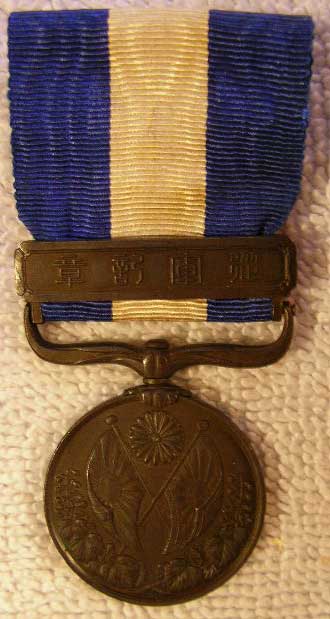
The Japanese were on the side of
Here is the back. The inscription is translated
below with the close-up.
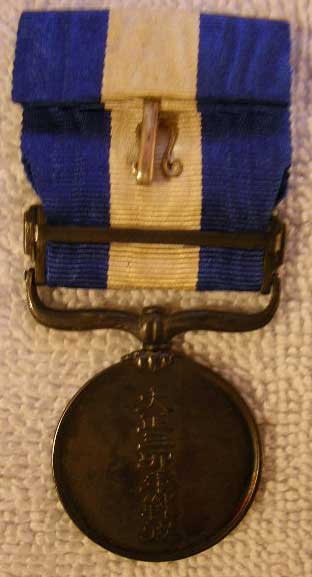
This shot shows the inside of the box.
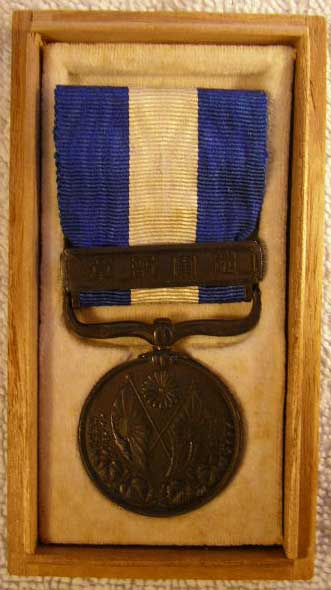
The exterior of the box has a column of
characters in gold leaf: tai-sho-san-yon-nen-ju-gun-ki-sho.
This translates to “Taisho 3-4 military service medal”. Taisho 3-4 means the
third and fourth years of the Taisho Emperor’s reign, i.e. 1914-1915. The Taisho
Emperor was the father of the much better-known Emperor Hirohito.
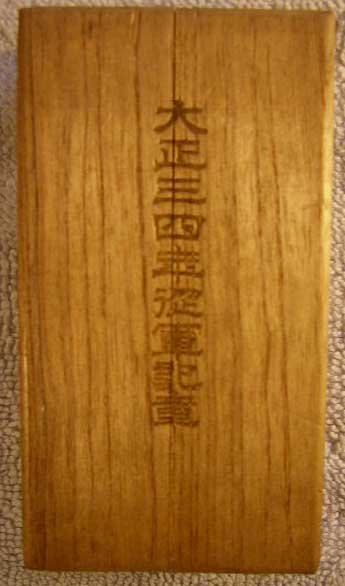
This close-up shows the inscription: tai-sho-san-yon-nen-sen-eki, “Taisho 3-4
campaign”. The medal is 30mm (1-3/16”) in diameter.
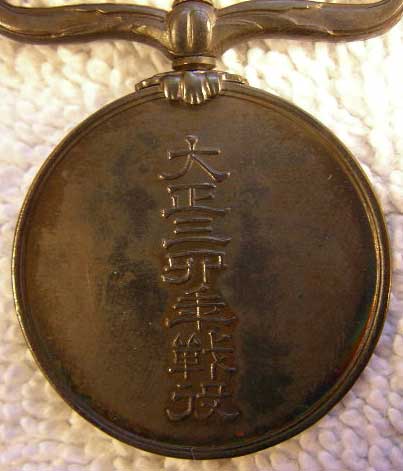
The certificate measures 394mm X
302mm (15-1/2” by 11-29/32”). The big, round red stamp in the middle says Dai nippon teikoku shokunkyokuin. This
means Seal of the Empire of Greater Japan Board of Decorations. The right side
has the recipient and the date of the award. The left side has the formalities
from the Board of Decorations. It has no
watermarks and nothing is printed or stamped on the back.
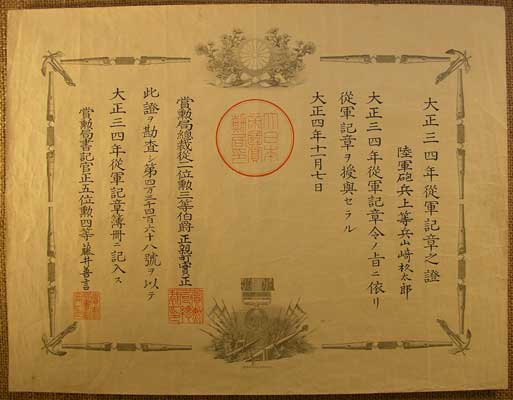
This close-up of the right side has
the most important information.
First
column (far right): Tai-sho-san-yo-nen-ju-gun-ki-sho-no-sho
Second
column from right: Riku-gun-ho-hei-jo-to-hei-yama-zaki-
**-ta-ro. (** could be mai or hira)
Third
column from right: Tai-sho-san-yo-nen-ju-gun-ki-sho-rei-no-?-ni-yori
Fourth
column from right: Ju-gun-ki-sho-o-ju-yo-seraru
Last column
(on left): Tai-sho-yo-nen-ju-ichi-gatsu-nano-ka
This translates roughly as:
“Certificate for Medal for Military Service During Taisho 3-4 [1914-1915]. Army
Artillery Superior Private Hirataro [pronunciation of given name uncertain]
Yamazaki is awarded the Medal for Military Service During Taisho 3-4 in
accordance with the regulations regarding the Medal for Military Service During
Taisho 3-4. Dated November 7, Taisho 4 [1915].”

This close-up of the left side has
the formalities from the Board of Decorations (shokunkyoku).
First
column on far right: Sho-kun-kyoku-so-sai-ju-ni-i-kun-san-to-haku-shaku-o-gi-machi-sane-masa
[or jis-sho]
Second
column from right: kono-sho-o-kan-sa-shi-dai-yon-man-san-zen-yon-hyaku-roku-ju-hachi-go-o-motte
Third
column from right: tai-sho-san-yo-nen-ju-gun-ki-sho-bo-satsu-bi-ki-nyu-su
Last column
(on the left): sho-kun-kyoku-sho-kan-sho-go-i-kun-yon-to-fuji-i-zen-gen
This translates roughly as:
“President of the Board of Decorations Count Sanemasa [or Jissho] Ogimachi
[Ogimachi is the surname], Junior Second Rank, and Holder of the Third Order of
Merit. Having checked this certificate I have entered it in the Register of
Medals for Military Service During Taisho 3-4 [1914-1915] as number 44468.
Secretary of the Board of Decorations Zengen Fujii, Fifth Rank, Holder of the
Fourth Order of Merit.” The red stamps at the bottom of the columns repeat the
titles of the officials (stamps are often used instead of signatures or
initials in

Here is a close-up of the artwork at
the centre-bottom of the certificate. The printing just below it says Dai nippon teikoku seifu insatsu kyoku sei-zo, meaning “Made by the Government
Printing Department of the Empire of Greater Japan”.
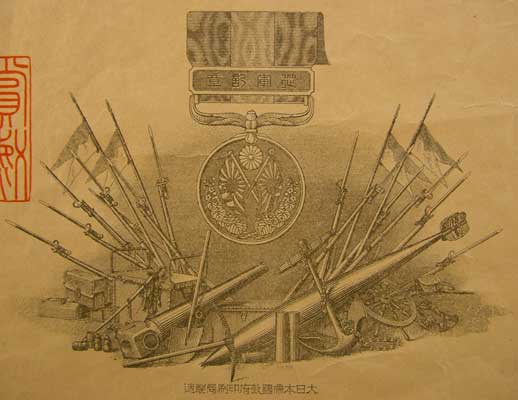
If you are interested in finding out
more about Japan’s role in the early part of
World War One, I recommend [I do not yet know of a good book that covers
this period, but I will add the title when I find one].
To
return to the base page on Medals, please click here: Nambu World:
Japanese Medals
To return to “Other
Japanese Militaria”, please click here: Nambu World: Other Japanese
Militaria
To return to the
home page, please click here: Nambu
World: Teri’s WWII Japanese Handgun Website
Last updated: July 21, 2006. All contents are
copyright Teri unless otherwise specified and may not be used elsewhere in any
form without prior permission.